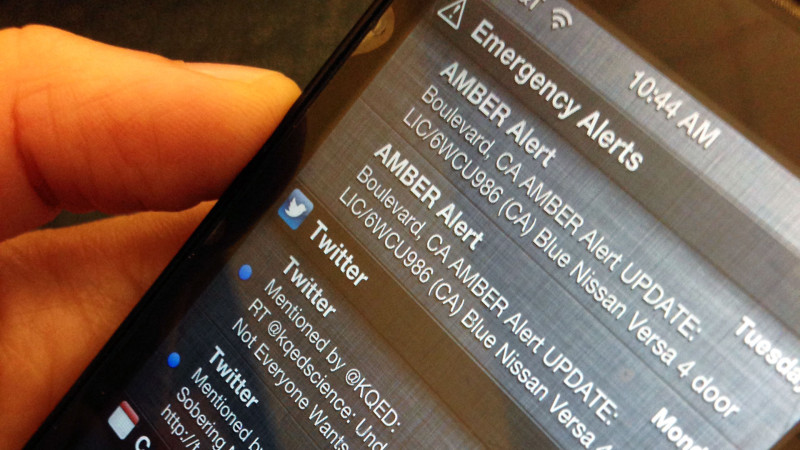[Editor’s Note, Feb. 19, 2014: This post has been updated from the original published Aug. 6, 2013.]
It’s an increasingly common occurrence: You’re at home watching TV or out enjoying a quiet dinner when suddenly your cellphone lights up, vibrates and sounds a nerve-rattling alarm. It’s all to announce an Amber Alert, and it can be extremely unsettling.
The automated cellphone alerts have been in place since Jan. 1, 2013, and were first used in California last August after a murder and kidnapping in rural San Diego County. In that case, a man was accused of killing a woman and her 8-year-old son, abducting her 16-year-old daughter, then fleeing with the teenager to Idaho. FBI agents shot and killed the suspect in that case, James Lee DiMaggio.
An Amber Alert issued while DiMaggio was believed to be driving his kidnap victim north was startling, to say the least. Craig Rosa, a producer for KQED Science, told us he was in his car with his wife when both phones started screaming “with an alert 10 times louder than any other alert on the phone. We had no idea what it was.” It was especially loud since his wife’s phone was connected via Bluetooth to the car’s stereo. “Almost ran off the road trying to shut the things off,” he said.
Just last week, on Feb. 11, an Amber Alert was issued after an alleged carjacking and kidnapping were reported outside a Safeway in Oakland. It was canceled the next day after police concluded that the three people involved all knew each other and that a female adult had been mistaken for a teenage girl.

